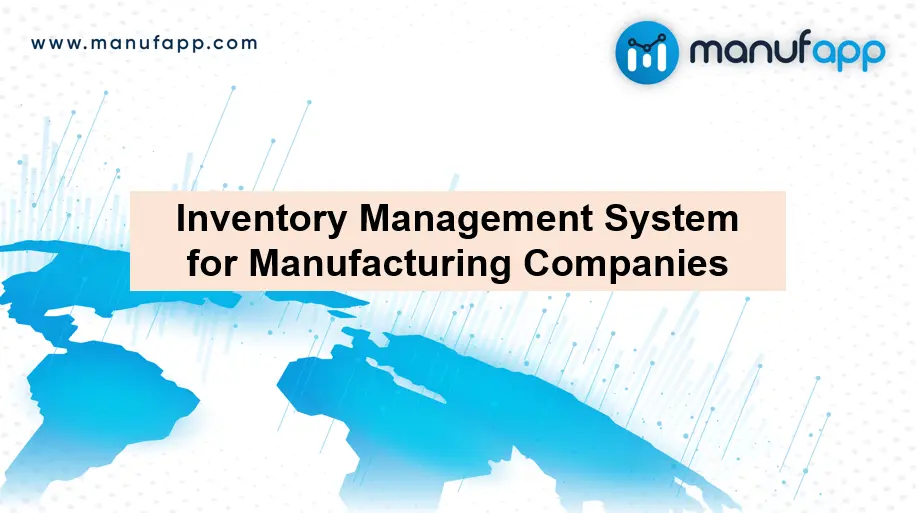Among the four Ms of Manufacturing viz Machines, Method, Manpower and Material, Inventory is one of the most critical. Manufacturers view Low Inventory as a sign of Lean Production Management. Japanese companies formulated the concept of JIT (Just In Time) to ensure that manufacturers do not carry high inventories.
High Inventory means money blocked in Inventory. It is like a danger signal to the manufacturer. If there is high inventory and suddenly there is a downturn in the industry, cash will be blocked. Sometimes product features changes due to regulations or the customer cancels the inventory, manufacturers will be burdened with the cost of carrying huge inventory. While this concept applies to all the participants in the value chains like retailers, wholesalers, Manufacturers; the way inventory is being managed is different for different members of the supply chain.
Inventory management for Manufacturers should have the following features:
- BOM/Recipe Management: Manufacturers convert Raw Material into Finished Goods and hence it is important that relationship between Finished Goods and Raw Materials is clearly defined through BOM/ Recipe Management
- Material Requirement Planning: Manufacturer needs to plan production for the factory, they run Material Requirement Planning. The input of MRP is orders to be manufactured and output is quantity of RM to be procured. This process is important as different RM is procured from multiple vendors and hence they have different lead times
- Inward and Outward Credit System: Manufacturers receive material from different suppliers and ship Finished Goods to different customers. Inventory Management System for Manufacturing receive material through Inward Material Requisition Slip and debit finished goods through an Outward Requisition Note. In some cases, manufacturers record the GRN, Invoice Number, Quality certificate etc. This helps them to know more about different Inward and Outward movement of Material.
- Auto Debit and Credit of Inventory: In a manufacturing process, RM is converted into Finished Goods. In small and medium Manufacturing, there are not enough personnel to issue MRNs for each credit and debit. Alos it is assumed that material produced would be in accordance with the BOM. Hence, whatever Finished Goods is produced, an auto debit of RM and WIP and auto credit of Finished Goods takes place.
- Kitting & validation of kitting: In many industries like Electronics, Heavy Equipment, a lot of items are assembled into one WIP or FG. Some of these items look similar and hence there is a danger that wrong item is issued from the warehouse. With the technology of BarCode and QR code, short kitting or wrong issuance of items do not take place.
- Warehouse Management: A manufacturing company has multiple locations where they keep inventory. Such locations are demarcated by labelling them as Warehouses. A good inventory management system for manufacturing should be able to create warehouses, allow movement of goods from one warehouse to another, and keep stock keeping in different warehouses.
- Minimum & Maximum Threshold: Manufacturers define minimum and maximum threshold of inventories. If a particular item is below the danger level or minimum inventory then it means that if there is some upswing in demand then manufacturers would not be able to serve their customers. This means loss in revenue and profit. Whereas if the inventory is above a certain threshold then it means the manufacturer is carrying unnecessary burden. In era of high interest rates, losing money in terms of blocked inventory is not good for the business. Inventory Management system for Manufacturing should be able to notify the manufacturer of low and high inventory so that necessary action can be taken.
Please have a look into our blog on Why do Manufacturers need Manufacturing Execution System in addition to Traditional ERP which focuses on MES benefits above Traditional ERPs.
With globalization, businesses have been challenged to reposition their inventory within their supply chain to drive reductions in the cost of goods sold and avail the benefit of production economies in remote locations. Please read more about it with reference to report by Asia Tech Daily at https://asiatechdaily.com/the-future-of-inventory-management/.





